Why European settlers in New England and Middle Colonies did so well
Because not all European settlers were the same
Make someone’s day: Gift a subscription to your friends and family!
In previous articles, I argued that:
North America had almost all the geographical preconditions for modern progress before European settlement
European settlers brought the missing elements with them (particularly domesticated animals capable of pulling plows).
The combination of these two factors led to “explosive colonization” and some of the most rapid economic growth in world history. An entire continent was virtually terraformed.
In this article, I want to explain in a little more detail why European immigrants to parts of British North America and the United States did so much better than European immigrants to other regions.
This article is one article in my multi-part series on American Progress:
Why European settlers in New England and Middle Colonies did so well (this article)
How American farmers mechanized agriculture in the 19th Century
How Progress shaped the Great Power conflicts of the 20th Century
You should also check out my “From Poverty to Progress” book series:
Settled by People from Commercial Societies
Though necessary, geography alone is not sufficient to promote progress. Ultimately progress comes from people. Here the British colonies that later became the northeastern United States were also fortunate.
The region now called the Northeastern United States was settled by people of the most progressive type of society at the time: Commercial societies. These settlers introduced the first four keys to progress: productive agriculture, trade-based cities, decentralized power, and export industries.
The arrival of European settlers, particularly the British, unlocked the enormous potential for development in North America. The British settlers brought with them technologies, skills, and social organizations from complex European societies. Just as important, they brought with them wheat, cattle, and horses (keys factors that Native Americans lacked).
In doing so, British settlers eliminated the final geographical constraints to the evolution of progress in North America. The result was one of the most rapid periods of economic growth in world history. Within just a few generations, eastern North America transformed from a sparsely populated region with a relatively low base in technology and standard of living to a:
densely populated region
with a substantial technology base and a
high standard of living.
In my book, From Poverty to Progress, I argued that progress started in a few city/states in Northern Italy around 1200. Gradually the innovations made in one region were copied by other city/states in modern-day Belgium and the Netherlands. Finally, southeast England copied those innovations. Gradually, the population size of these “Commercial societies” grew until they became entire nations.
Commercial societies share much in common with modern Industrial societies. Inhabitants of Commercial societies lived in cities, used their skills to sell a product or service in the market, and cooperated with strangers who were potential customers for their services. This made Commercial societies very different from the Agrarian societies dominated by titled monarchs and aristocrats ruling over a vast ocean of peasants in the countryside.
Four regional cultures
In his book Albion’s Seed, David Hackett Fisher gives a detailed description of each of the four ethnic groups that settled in British North America. He also showed how their cultural characteristics built the foundations of American progress. You can read a short summary of this outstanding book in my library of online book summaries.
In this book, David Hackett Fisher argues that the key to understanding American culture is its regional diversity, which comes from the four original British settler groups:
Puritans from southeast England who settled in what is now New England.
Quakers from northern England (and other religious dissenters) who settled in Pennsylvania.
Anglican “Cavaliers” from western England who settled in the Virginia Tidewater.
Presbyterians from the English/Scottish border region who settled in the Appalachian mountains.
In Albion’s Seed, David Hackett Fisher further argues that:
The early settlers defined the regional culture, religion, architecture, farming practices, and political/economic institutions.
Those regional cultures have persisted to this day.
This heterogeneity forced the Founders to establish the Constitution based on decentralized government, religious liberty, and checks and balances. Otherwise, the 13 colonies would never have been able to agree on forming one nation.
Westward migration in the 19th Century spread those regional cultures (particularly New Englanders and Virginians) across the continent.
Subsequent waves of European immigration in the 19th and 20th centuries integrated into regional cultures (not into general American culture as is generally supposed).
Conflicts between the regional cultures defined:
The American Civil War
Partisan conflict between Democrats and Republicans.
While historians have noted that Fisher missed two key settler groups, Fisher’s argument has stood the test of time. Even genetic studies show great regional variation (see map above). The two missing groups from Fisher’s account are:
Dutch settlers in New York
Barbados slave-owners who settled in the Carolinas
If one were to include Canada, you should also include the French in Quebec and upper New England.
The Puritans settle New England
In this article, I am going to push Fisher’s argument a little further to help us understand the foundation of American progress. I believe that the unique characteristics of these original British settlers made it far more likely that the American colonies would evolve into Commercial societies long before the Industrial Revolution.
The Puritans were the first and by far the most important, group of settlers in what is now the northeast United States. The Puritans migrated from southeastern England (typically from East Anglia) and settled in what is now called New England.
In other words, Puritans migrated from the most commercialized region in Britain that had been heavily influenced by constant interaction with Commercial societies in Flanders and the Netherlands. Except for the Dutch Republic, southeastern England was probably the richest and most commercialized region in the world in the 17th Century. It was dotted with commercial cities and commercial farms. Not surprisingly, those settlers founded what would later become the most commercialized region in North America.
Between 1629 and 1640, a span of only 11 years, approximately 21,000 Puritan settlers arrived in what is now southern New England. Because they settled very early, in vast numbers and they came as entire families, these settlements grew rapidly in population. Because of this, the Puritan settlers in New England had an outsized influence on American history.
Today, we tend to think of Puritans as narrow-minded religious fanatics, but they were actually highly urbanized, skilled in trades, and egalitarian in their political and economic instincts. Except for their religious practices, Puritans were strikingly modern.
Puritans instinctively formed:
Trade-based cities
Decentralized and democratic government
Commercialized farming practices based on farmer-owned plots of land.
Businesses
Schools and universities
In addition, the Puritans were very hostile to:
the English monarchy, who they were to soon fight in the English Civil War
the Anglican Church, which was the established Church in England.
Some Puritans escaped to North America, while others chose to stay and fight the monarchy in England. Whether in England or in North America the confrontation between Puritans and the English monarchy shaped political conflict for two centuries.
Because the Puritans from southeastern England were heavily urbanized and possessed strong artisanal skills, they quickly established thriving trade-based towns and cities. Boston was by far the largest, but Salem, Marblehead, Gloucester, Bridgewater, Newburyport, Portsmouth, Providence, New Haven, and Hartford were also significant trade-based towns.
Because Puritan villages in England were highly autonomous and democratically governed, New England towns were so as well.

What the Puritans did not bring with them were the centralized extractive institutions of Britain. Aristocrats, gentry, civil servants, and soldiers were almost totally lacking among the original Puritan settlers.
No one, therefore, had the incentive to establish copies of the old extractive institutions from the Mother Country. Many Puritans came to America specifically to escape these institutions, particularly the Anglican Church. The only centralized institution that Puritans created was their Church.
Other than their religious intolerance, for which they are justly famous, the Puritans established a remarkably modern society in New England. To do so within the span of one generation is an extraordinary achievement. The population expanded rapidly due to:
High levels of immigration from 1620 and 1642
Extremely high birth rates (with an average of 7 children per family)
Low death rates, and
Easily available farmland
In 1650, the total population of New England was 22,800 and by 1770 it was 581,000. And many of them were concentrated in or near Boston, its largest commercial city.
Perhaps nothing like this societal transformation had ever taken place. The Puritans literally terraformed coastal New England without industrial technologies.
This dramatic transformation of the region in such a short time is what James Belich calls “explosive colonization.” Explosive colonization occurs when:
a large group of settlers from complex societies moves into a sparsely populated region, and
the region shifts from one society type to another in a very short period.
This enables a dramatic expansion of population, wealth, and productive land.
(Note that I am using the term slightly differently from Belich by attaching the concept of society type to it)
Explosive colonization usually occurs when settlers from a complex Agricultural, Commercial, or Industrial society arrive in a land that possesses almost all the key geographical factors for such a society but with a few missing pieces. Those missing pieces (particularly staple crops and traction animals) prevented the indigenous people from evolving into more complex societies.
But when the settlers brought those missing ingredients with them, a dramatic transformation took place. The enormous geographical benefits of eastern North America were finally realized.
The Quakers in the Mid-Atlantic colonies
The Puritans from southeastern England were not the only settlers of North America to come from Commercial societies. From 1675 to 1715 about 23,000 Quakers from northeast England settled in the colony of Pennsylvania. Their leader, William Penn, acquired an enormous tract of land from King Charles II.
William Penn used the land to establish a colony based on religious liberty. At the time, this was an extraordinary departure from the norm. European states had only recently finished more than a century of bloody religious civil wars. Peace had been purchased by a continent-wide agreement that monarchs would determine the religion of their subjects.
At the time religious minorities were considered to be a fundamental threat to the stability of society. William Penn’s concept of religious liberty set a very positive precedent that would enable the United States to escape the religious civil wars that had plagued the European continent for generations.
Penn’s other great achievement was the founding of Philadelphia on the banks of the Delaware River. During the late colonial period, Philadelphia was the most populous city and a center of regional and international trade. It was one of the most important cities in the Anglo-American world.
The Quaker settlers who followed William Penn shared many of the same characteristics as the previous Puritan settlers. They overwhelmingly consisted of artisans, free tenant farmers, and traders (see table above).
The region of England where the Quakers came from was not as commercialized as southeast England, where the Puritans originated, but the settlers were disproportionately urban. Even those who came from villages were often local artisans who brought important skills with them.
The religious liberty of the colony of Pennsylvania lured many persecuted minorities to migrate from Europe, including Jews, Huguenots (French Protestants), Amish, Mennonites, and Lutherans. Most came from societies that were either unusually commercialized or had an unusually large proportion of free peasantry. Jews and Huguenots came disproportionately from towns and cities, while the German religious minorities largely came from the free peasantry of the Rhineland.
Dutch settlers in North America
The Dutch, the premier Commercial society of the era, also played a largely forgotten role in the early settlement of North America. The trade-minded Dutch quickly spotted Manhattan Island as a perfect location for a harbor and established New Amsterdam, which the British later renamed New York City (which you might have heard of).
The Dutch West India Company established the colony as a fur-trading depot with the Native Americans. While New Englanders encouraged immigration (as long as you were Puritan), the Dutch West India Company saw any settlers who were not company employees as a threat to their monopoly over the fur trade. Therefore, they actively discouraged immigration.
Given the thinking of the era, this was a wise decision, but it stunted the population growth of the Dutch colony. This kept the colony so small that it easily fell to the British without much of a fight in 1664.
If the Dutch had encouraged the settlement of families, a large and prosperous Dutch colony might have had a sizeable cultural influence on later American society. In reality, the Dutch influence is largely restricted to New York City and the Hudson River valley, the two areas that had a sizeable Dutch population in 1660.
While the Dutch did not play a major role in the settling of North America, they did establish the bedrock culture of New York City. To this day, New York City is a highly commercial and cosmopolitan city thanks to a large extent to the Dutch.
The formation of an American Commercial society
So in sum:
These three settler groups (Puritans, Quakers, and Dutch) all came from highly commercialized regions and
They settled in geographical regions that were highly conducive for the establishment of Commercial societies
We should not be surprised, therefore, that what is now the Northeast United States rapidly became a Commercial society with:
Relatively large commercial cities, such as Boston, New York City and Philadelphia
A bevy of smaller commercial cities (Salem, Newport, Providence, Marblehead, etc)
Very commercialized farming (except on the frontier)
Dynamic export-oriented industries (wheat, timber, fishing, furs, ship-building and outfitting)
Democratic governance (except for royal-appointed governors)
Elected colonial legislatures
Town meetings
No feudal landed class
No professional military
Relatively egalitarian patterns of land ownership
So the British Colonies in what is now the northeastern United States inherited all that was best from Britain without any of its centralized extractive institutions. All that was missing was to:
Get rid of the King and royal-appointed governors (accomplished in 1783) and
Establish religious liberty (accomplished by the First Amendment to the US Constitution in 1787).
Abolish slavery (accomplished in the North immediately after independence and in the South after the Civil War)
What about other European settlers?
Of course, not all European settlers of the Americas came from Commercial societies. Most did not. The settlers of the present-day Northeast were the exception, not the rule.
The British settlers who came to what is now the American South came from distinctly Agrarian regions within Britain with powerful gentry, large landholdings, few cities, and semi-feudal labor. These “Cavaliers” sought to recreate their hierarchical society in a land with abundant free land. In the long run, they could only do so with African slave labor. I will write more about the American South in future articles.
The Spanish settlers of Latin America, the Russian settlers of Siberia, and the French settlers of North Africa also came from Agrarian societies and established distinctly hierarchical societies as well.
If the French, Spanish, Russia, or even those from different regions within Britain had settled in the modern-day eastern United States, American history might have turned out very different. And with the westward migration of the 19th Century, the descendants of Commercial and Free Peasant societies brought their genes, culture, technologies, skills, and organizations with them. Fortunately for them (and us) the geography of the North American interior with its vast plains connected by navigable rivers was even more favorable to modern progress.
In case you are interested in additional cultural differences between the four settler cultures of Colonial America, here is a handy chart that overviews Fisher’s evidence. Note that many of these characteristics are not very relevant to long-term economic growth, but they are interesting nonetheless.
This article is one article in my multi-part series on American Progress:
Why European settlers in New England and Middle Colonies did so well (this article)
How American farmers mechanized agriculture in the 19th Century
How Progress shaped the Great Power conflicts of the 20th Century
You should also check out my “From Poverty to Progress” book series:




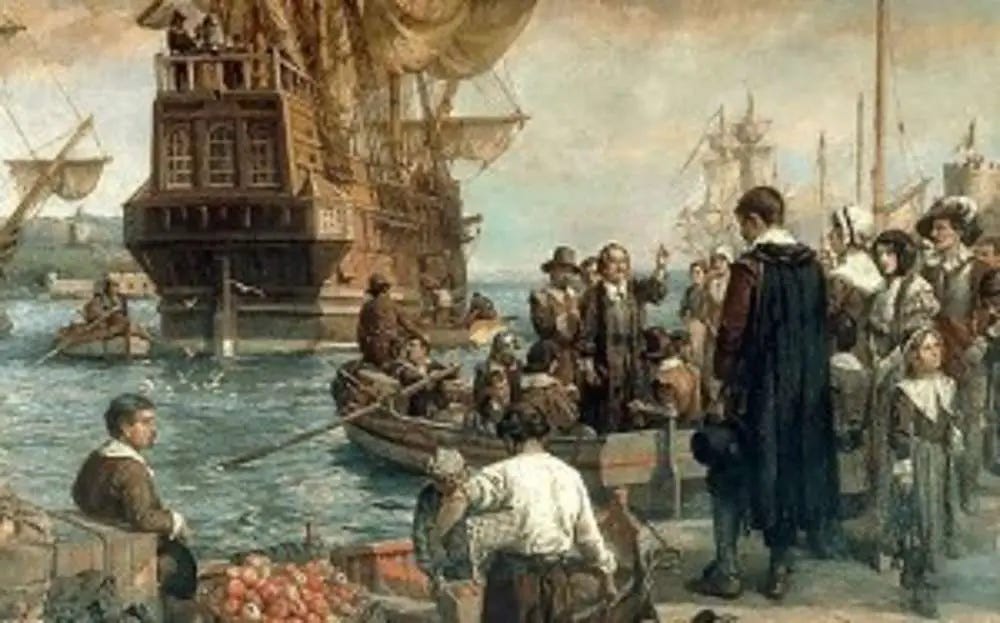

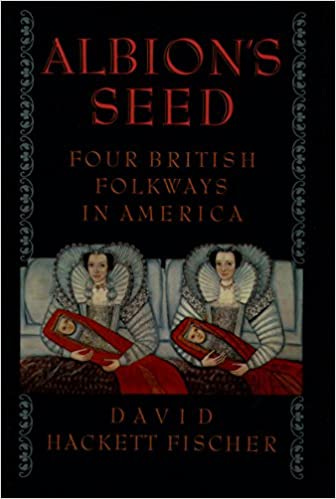


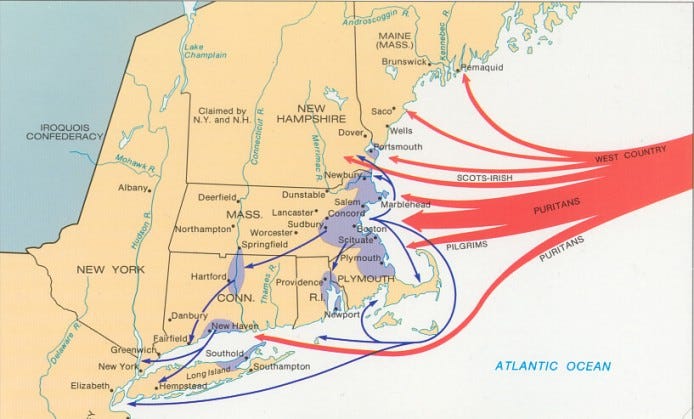

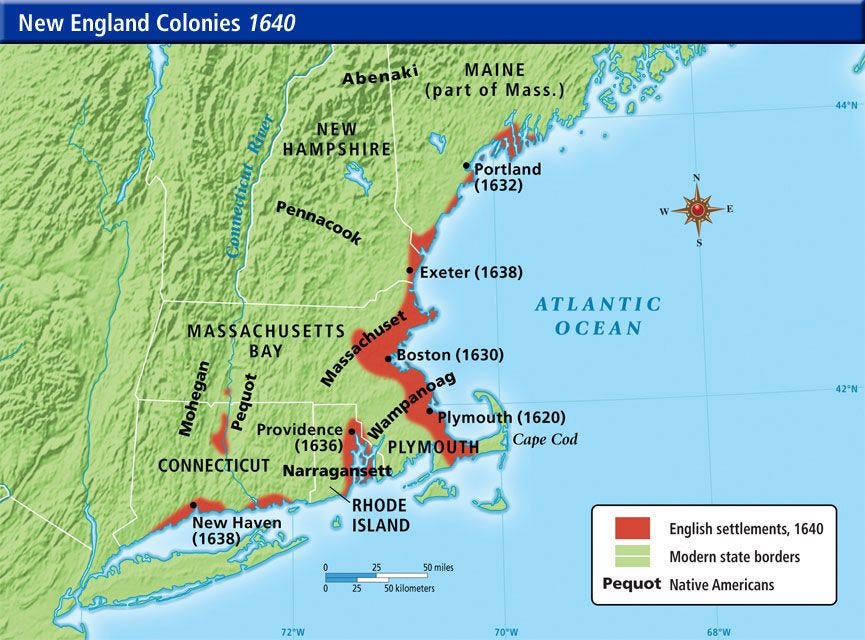

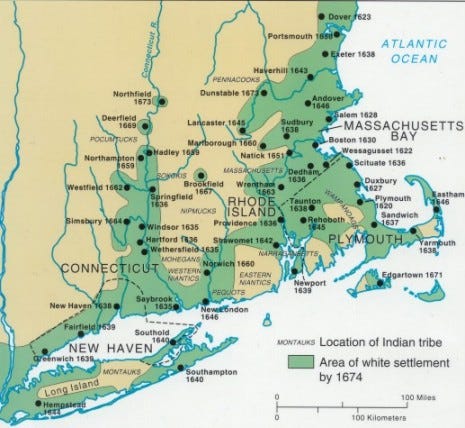



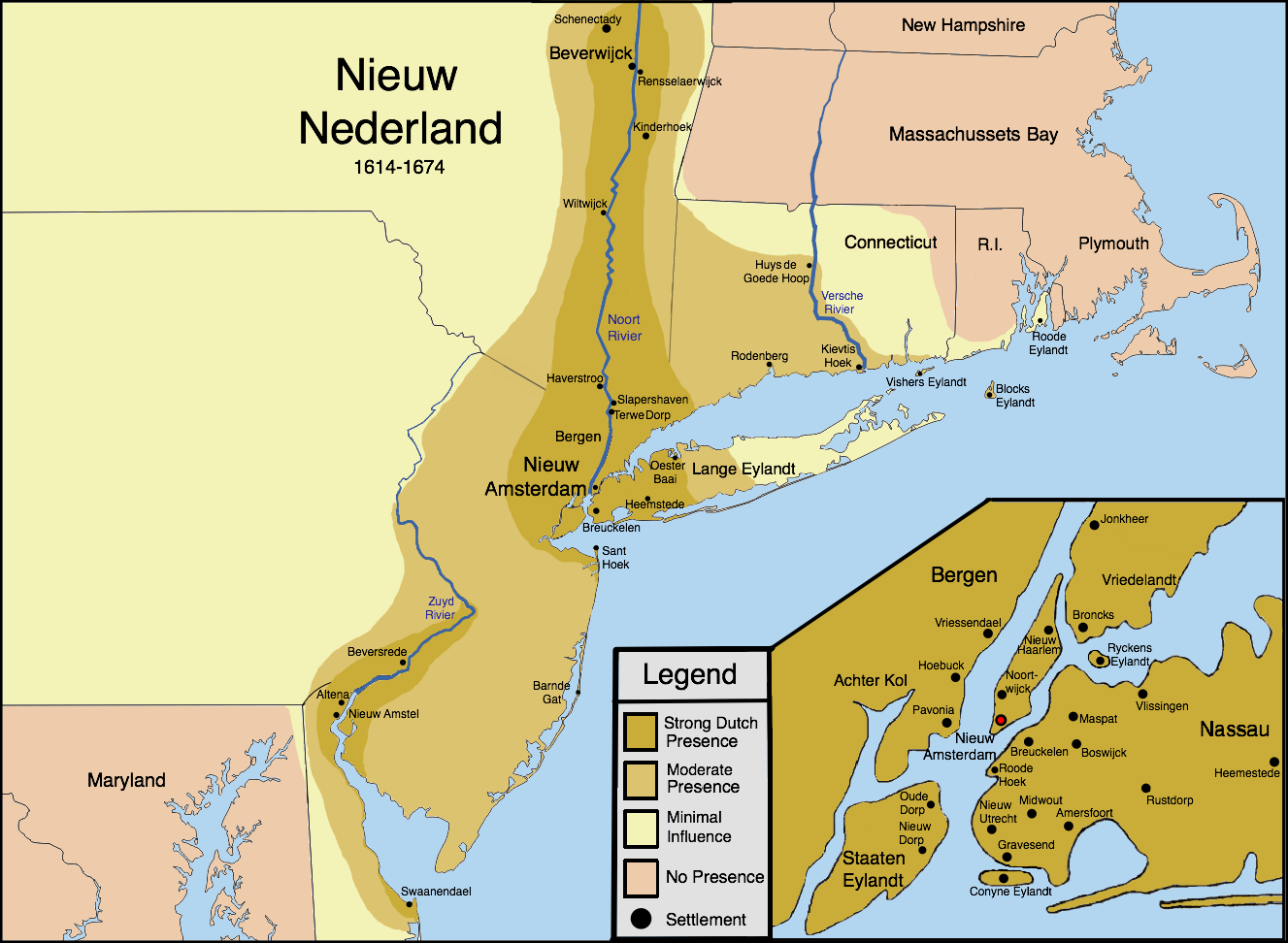
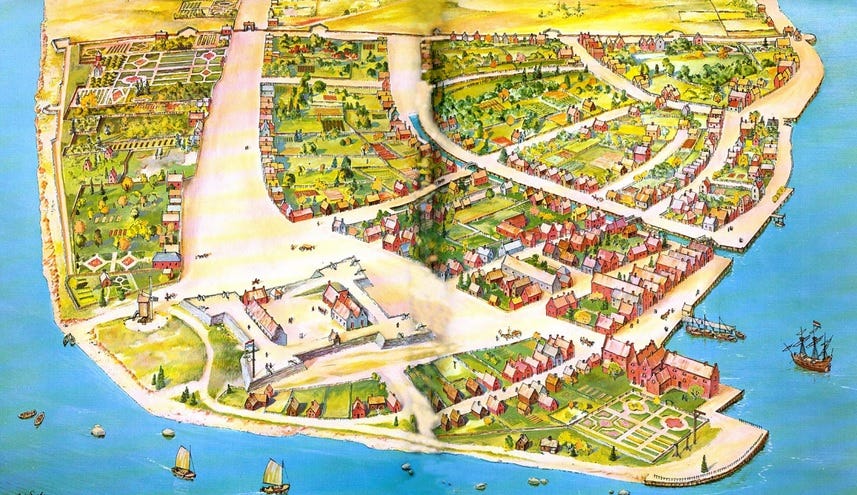
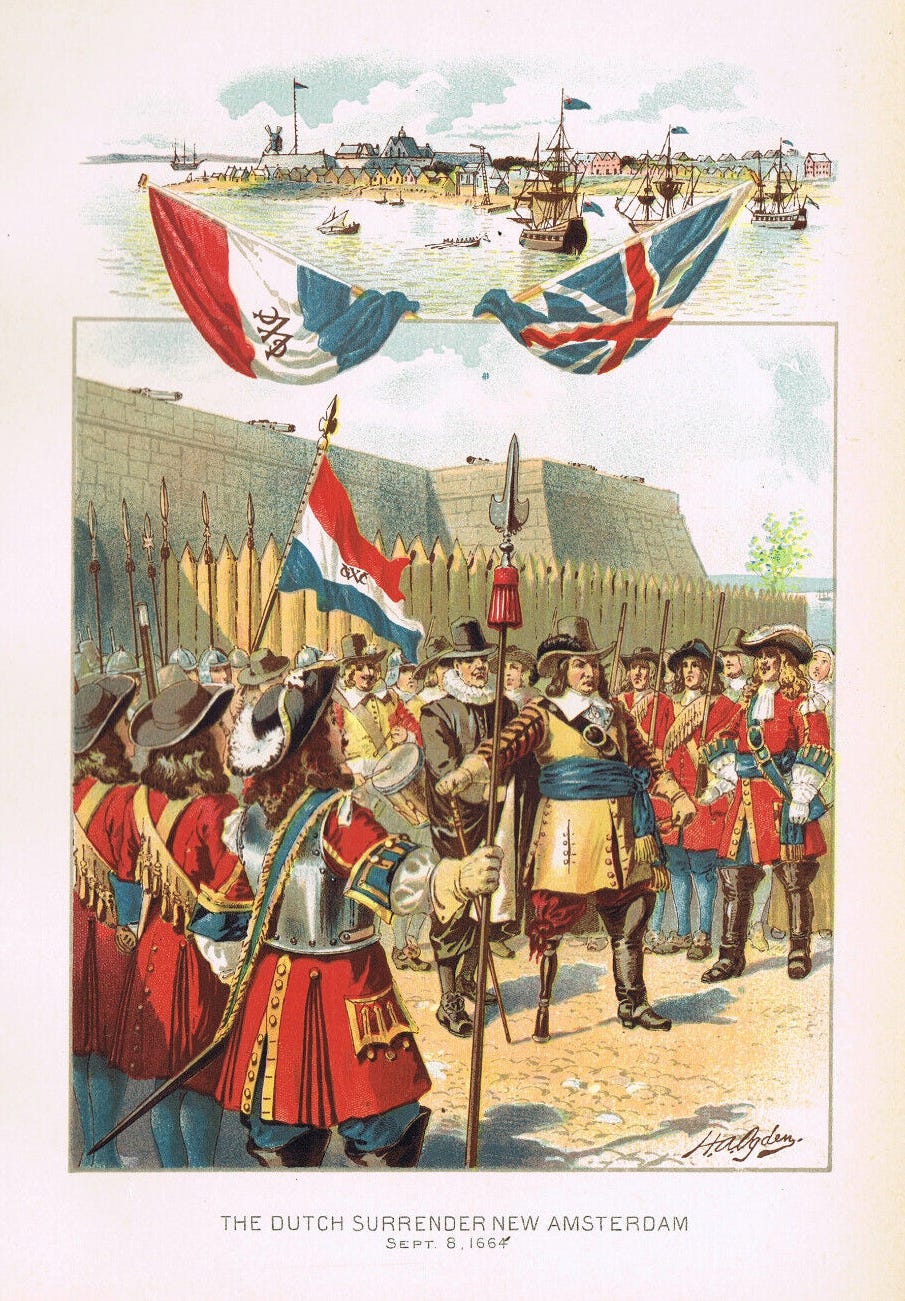


Extremely enlightening, well argued and convincing.
Thank you for the interesting survey.
My father's ancestors were part of that first group, they came in 1634 ,settled along the Maine/New Hampshire border not far from Portsmouth and specialized in lumber.
They later brought their skills down to the Carolinas where there is a town named after them but apparently they didn't like the South as much.
We don't know what religion they were but there is some evidence they were Catholic.